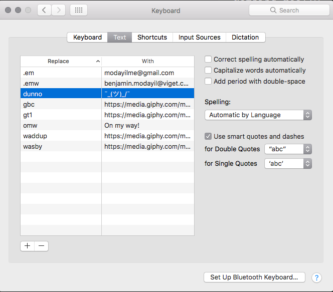This time last year, I had never heard of UX. Coming from a family of doctors, the only job-related acronym I knew was MD. But this changed during my summer in Silicon Valley, where I worked as a media intern with a startup accelerator and venture capital firm. Over the course of just three weeks, four colleagues told me that I should look into UX. I really think you would like this. You’d be so good at it!
Thinking it was some sort of sign, I decided to give UX a try. It was love at first sight.

From that point on, I spent my free time immersed in UX books, articles, and blogs. I had never felt so passionate about a field before. I used my Christmas break to take an online UX course. I filled my schedule with phone calls with every UXer in my LinkedIn network. I convinced a professor to give me the last seat in her graduate level usability design course.
And after months of hard work, this intense immersion paid off. In April, I landed my dream job: a UX internship with Viget.
I might have “won the prize,” so to speak, but I haven’t forgotten all of the the stress, long hours, and uncertainty it took to get here. At first, like many aspiring UXers, I was totally lost. What even is UX? How do I learn the skills I need? What do I need to do to get a UX job?
From my experience, finding answers to the questions can feel impossible.

But it doesn’t have to be that way. Here are 7 tips I’ve come up with to help others interested in pursuing UX get the answers they need...without the stress.
1. Immerse yourself in UX knowledge
UX is a hot field right now, so there are tons of resources out there to learn more. The challenge is finding the right ones. Here are some of the resources I found the most useful starting off:
Books:
Don’t Make Me Think (Steve Krug) – this is UX must-read #1. It walks you through the basics of every aspect of UX, without overwhelming you with hyper-technical terms.
The Design of Everyday Things (Don Norman)– although it’s centered around the design of physical objects, this book stresses the importance of understanding user needs.
The Elements of User Experience (Jesse James Garrett) – this book will help you see the big picture of UX. It breaks down the complexity of the field into clear explanations and diagrams.
Blogs:
52 Weeks of UX– this is an easy and quick way to build your UX knowledge. Content is broken down into 52 weeks, each of which features 1-3 short UX insights.
UX Booth– this site is made for beginners and intermediate UXers. Start with this article for a UX crash course.
UX Magazine– this publication is like UX Booth, but with the addition of UX event calendars and job listings.
People:
Brad Frost (@brad_frost) – a developer, designer, speaker, and writer, Brad tweets about a wide variety of awesome web design stuff.
Luke Wroblewski (@lukew) – currently a Product Director at Google, Luke is one of the most influential people in the UX field. (He coined the idea of “Mobile First.”)
Kim Goodwin (@kimgoodwin) – author of Designing for the Digital Age, Kim offers great tips on what it takes to be a successful UXer.
2. Take an online class
If you prefer structured learning but don’t have the time or money for a full-fledged UX program, online classes could be the move. There is a plethora of options out there, but based on my research and personal experience, here are the three classes I would recommend:
Hack Design– 50 easy-to-follow (and free!) design lessons delivered straight to your inbox over the course of 50 weeks
User Experience Design Fundamentals– a cheap, video-based course that teaches you basic UX principles in just 10 hours
General Assembly UX Design Circuit– if you have the time and money, this is a course worth investing in. You will learn key UX skills and put them to practice in a real project.
3. Find mentors
Although I learned a ton about UX from scouring the internet, reading books, and taking online classes, I have gleaned the most from conversations with people in the field.
If you live in a small city or somewhere non-techy, it may seem like you’re all alone in the big, scary world of UX. But chances are, you’re not.

Do some LinkedIn detective work. Ask family and friends if they know anyone who does UX (if they look at you with blank stares, try “web design”). Even if you only find one match, that one UXer can probably connect you to dozens more.
Once you’ve found these potential mentors, get their attention. Send emails and InMails, Tweet at them, reach out via their website. It may take months, but your perseverance will pay off.
When you land a conversation – whether by phone, in-person, or simply through email – make sure you show up prepared. Know what the person does and be ready to ask questions catered to that experience. I saw on your LinkedIn that you attended grad school for Human-Computer Interaction...do you think that’s the best path for becoming a UX Designer?
Most people don’t want to simply tell you about their job – they want to tell you about the journey, the challenges and successes, and the learnings along the way. And they want to share those learnings with you.
Approach every networking opportunity as an opportunity to learn. Don’t waste your time figuring out how to make yourself sound as awesome as possible. Spend that time finding the best way to learn from each connection you make.
4. Attend local UX Meetups
Meetups are another great way to network with UXers in your area. They’re also an awesome opportunity to learn new design skills and discuss broader tech-related topics.
All you have to do is go to the Meetups app or website, search UX (try usability and interaction design if you reach a dead end), register for an event, and then show up.
5. Start a personal project
After you have some basic UX knowledge under your belt, you can take it to the next level by applying it to an actual project. If you can’t take a class or get an internship or apprenticeship with a company right away, don’t worry – you can do UX work anytime, anywhere.
There are several routes you can take:
Think of a website you hate. What makes you hate it? What could make it better? Now turn those ideas into designs – sketch out some ways you think the site could be improved.
Send an email to a company you like asking if you can do some informal research on their website. Does it match the needs of the target audience? Does it follow basic UX design standards? Make sure to clarify that your only intention is professional development.
Design your own app or website. You can use a pre-existing product as a launching point or create something radically new.
No matter which route you choose, make sure you record every part of the project process so you can add it to your UX portfolio. Write about what you did, take photos of sketches and scribbles, and capture screenshots of sites that inspired your designs. You’ll be able to compile case studies from these artifacts.
6. Analyze everyday experiences
An easy way to build your UX chops is to evaluate the experiences that everyday objects, products, and technologies create. What could make them more intuitive or enjoyable to use? What prevents them from being this way?
For practice, think about how the principles of UX apply to these examples:

Can you think of other real-world applications of UX principles?
And most importantly...
7. Trust yourself
There are very few rights and wrongs when it comes to UX. There’s no right way to break into the field – no specific degree you have to get or class you have to take. And there’s is no right way to design a website.
So if you’re worrying about not doing UX “the right way,” don’t.
As long as you’re absorbing all of the knowledge you can and then starting to apply that knowledge in your daily life, you’re already well on your way to becoming a UX Designer.
Have any tips you’d like to add to the list? Post in the comments below!




































































